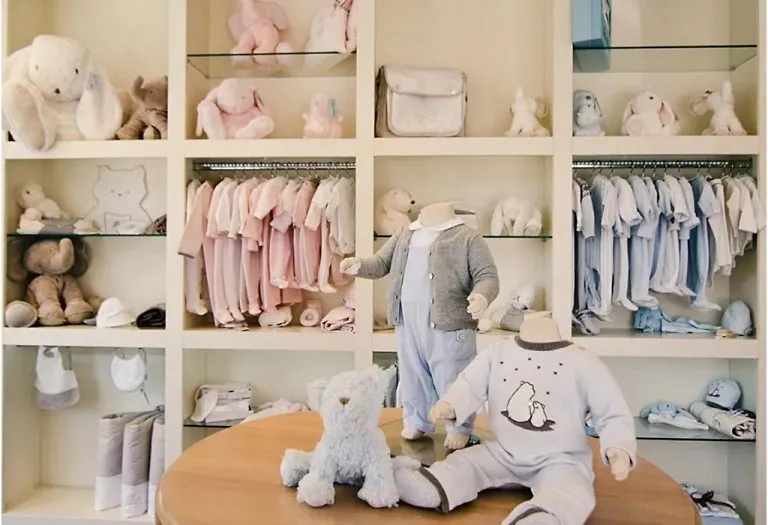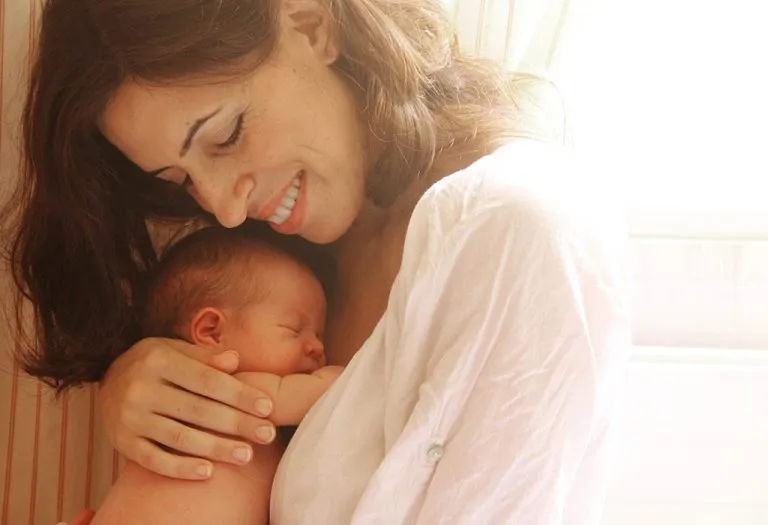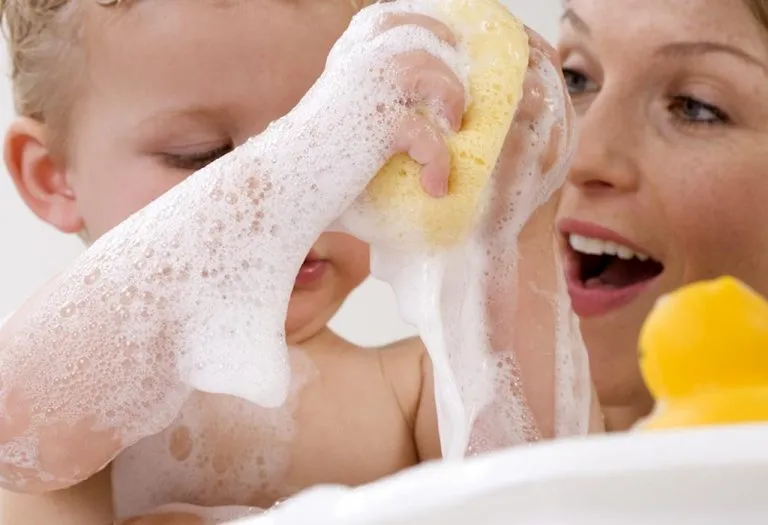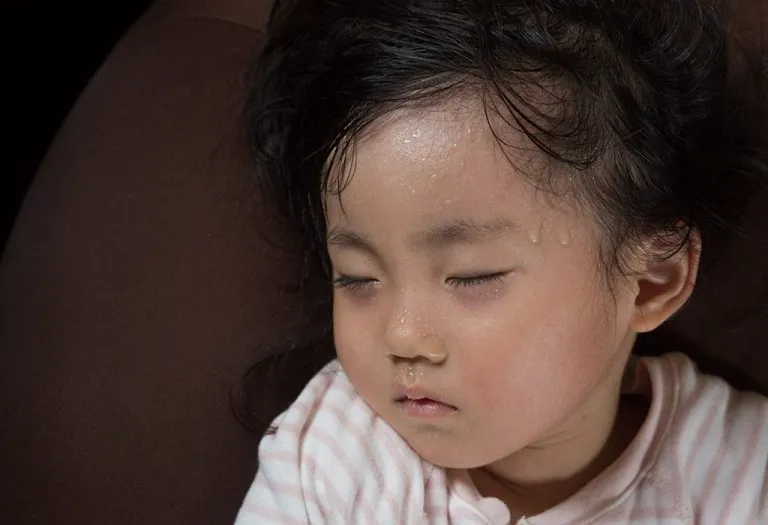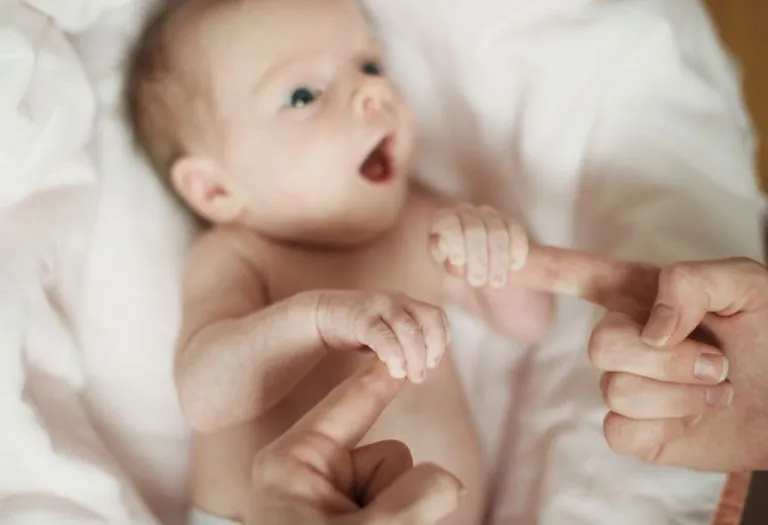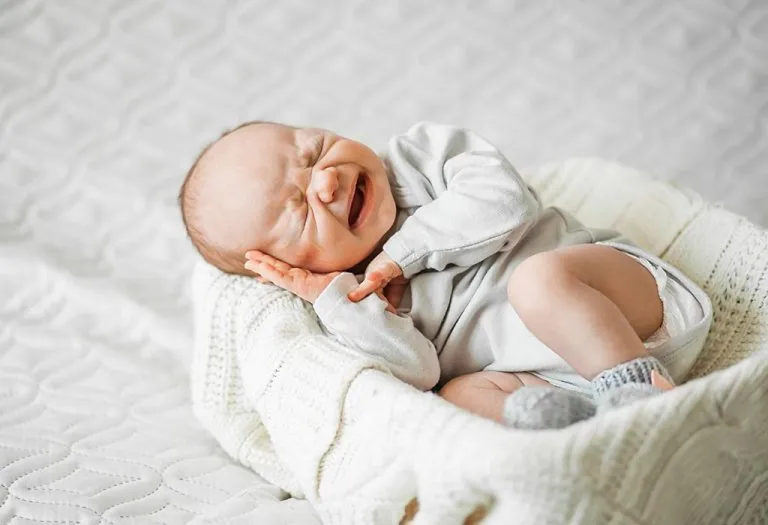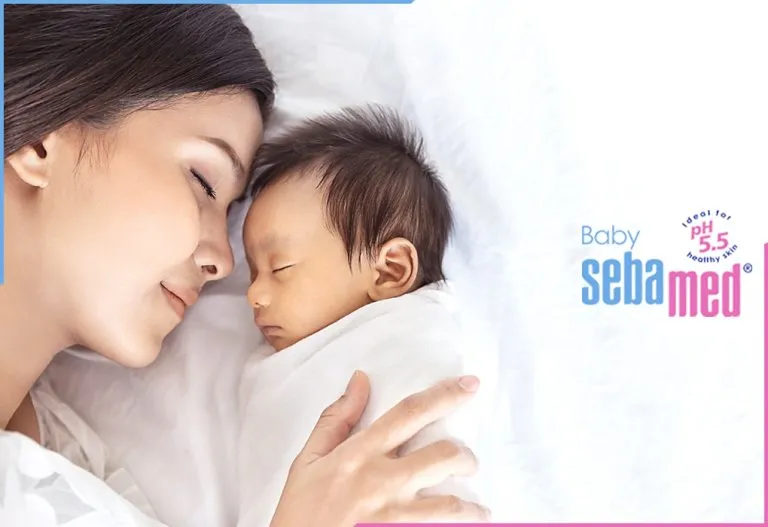A Guide to Baby and Toddler Clothes Size – How to Measure and Charts?
- How to Measure Your Child’s Clothing Size?
- Baby Clothes Size Chart
- Toddler Clothing Size Chart
- How to Convert Sizes to Other International Size Types?
- How Many Clothes Does My Baby Need in Each Size?
- Tips to Help You Buy the Right-Sized Clothes for Your Child
- FAQs
Purchasing clothes for yourself is now simpler than ever. You know your clothing size well and can quickly pop into the trial room for confirmation. However, choosing the baby and toddler clothing size can be daunting for parents. With rapid growth and varying body shapes, finding garments that fit comfortably while allowing movement is essential. Parents are usually clueless in understanding how baby clothes sizes work and the right one to pick for their child. Every baby is unique in its physical constitution and growth rate. Therefore, purchasing clothes that would fit comfortably as well and last for a longer time is a tricky line to walk.
This article will walk you through the steps to measure your toddler clothing sizes correctly and provide detailed size charts to help you make informed clothing choices.
How to Measure Your Child’s Clothing Size?
When choosing the right clothes for your baby, there are several factors to consider. One of the most crucial aspects is understanding how to measure clothing size and the various standards used to define it.
Most of the time, the sizes of the clothes mentioned on the tags are based on the child’s age range. At times, a few brands also choose to mention the baby’s height or weight as a benchmark. While this can be helpful, each baby grows at a different speed.
In baby clothes sizes for 0-3 months, purchasing single bodysuits or one-piece clothing that can be extended is highly preferred. Larger sizes can be used later in life as well. Toddlers need a different perspective altogether. Since these babies can now move around or might even potty properly, the clothes need to ensure free movement without being restrictive. Also, the units of measurement differ from centimetres to inches based on the standard adopted by the clothing brand.
Choosing the right boots for your baby can be a challenge. However, by understanding your baby’s foot dimensions, you can be confident in your shoe purchases. Simply let your child’s foot be fully extended and measure from the long toe to the edge of the heel, along with the maximum width.
Baby Clothes Size Chart
Understanding a baby’s clothes size for 9-12 months or even smaller than that is quite challenging since all of these fall within the months when a child’s body grows rapidly. Any clothes that fit exactly in a particular month might end up being a bit too tight within a couple of weeks. Therefore, shopping for newborn babies and infants under a year old requires extra precaution.
| Clothing Size Based on Age | Height | Weight |
| Premature New Born | Less than 17 inches | Less than 2.2 kg |
| Full Term New Born | Less than 20 inches | 2.2 to 3.6 kg |
| New Born to 3 months | 20 to 23.5 inches | 3.6 to 5.7 kg |
| 3 months to 6 months | 24 to 25.5 inches | 5.9 to 7.5 kg |
| 6 months to 9 months | 26 to 27.5 inches | 7.7 to 9.3 kg |
| 9 months to 1 year | 28 to 30.5 inches | 9.5 to 10.6 kg |
Toddler Clothing Size Chart
Using a toddler clothing size chart will be extremely useful for figuring out the right baby clothes size for 18-24 months. This chart will give you an idea of the age range, paired with an approximation of height and weight, allowing you to make a near-perfect decision.
| Clothing Size Based on Age | Height | Weight |
| Nearly 1 year | 28 to 29.5 inches | 8.8 to 9.9 kg |
| 1 year to 1.5 years | 30 to 31.5 inches | 10.2 to 11.8 kg |
| 1.5 years to 2 years | 32 to 33.5 inches | 12 to 13.6 kg |
| 2 years to 3 years | 34 to 37 inches | 13.8 to 15.4 kg |
| More than 3 years | 38 inches and more | 15.6 kg and above |
How to Convert Sizes to Other International Size Types?
You might have access to a 2-year-old clothing size chart, but the standard used to measure those sizes in other countries may not be the same as yours. Clothing size standards differ quite a bit, and the major differences are between European, UK, and US sizing.
A rule of thumb to remember when purchasing clothes is that nearly all European sizes are based on the baby’s height. As for UK and US sizes, they are pretty much the same, with tiny differences in the width or height of the clothes. It is best to rely on physical dimensions instead of the child’s age mentioned on the label.
How Many Clothes Does My Baby Need in Each Size?
Determining the right number of clothes for your baby in each size can help you manage your wardrobe efficiently and ensure your little one is always comfortable. Here’s a list of essential clothing items for each stage of your baby’s growth.
- 7 to 10 onesies
- 5 to 8 sleepers/pyjamas
- 4 to 8 shirts
- 6 to 8 pants/shorts
- 7 to 10 pairs of socks
- 2 to 3 hats
- 3 to 4 sweaters
- 1 to 2 jackets/coats
- 2 to 3 pairs of mittens
- 1 to 2 special occasion outfits
While this list is a good starting point, you may buy more or fewer items depending on your specific needs.
Tips to Help You Buy the Right-Sized Clothes for Your Child
While it is essential to understand baby clothes sizes and chest measurements before picking out the right clothes for your little one, there are also a few tips that you can consider to make things easier.
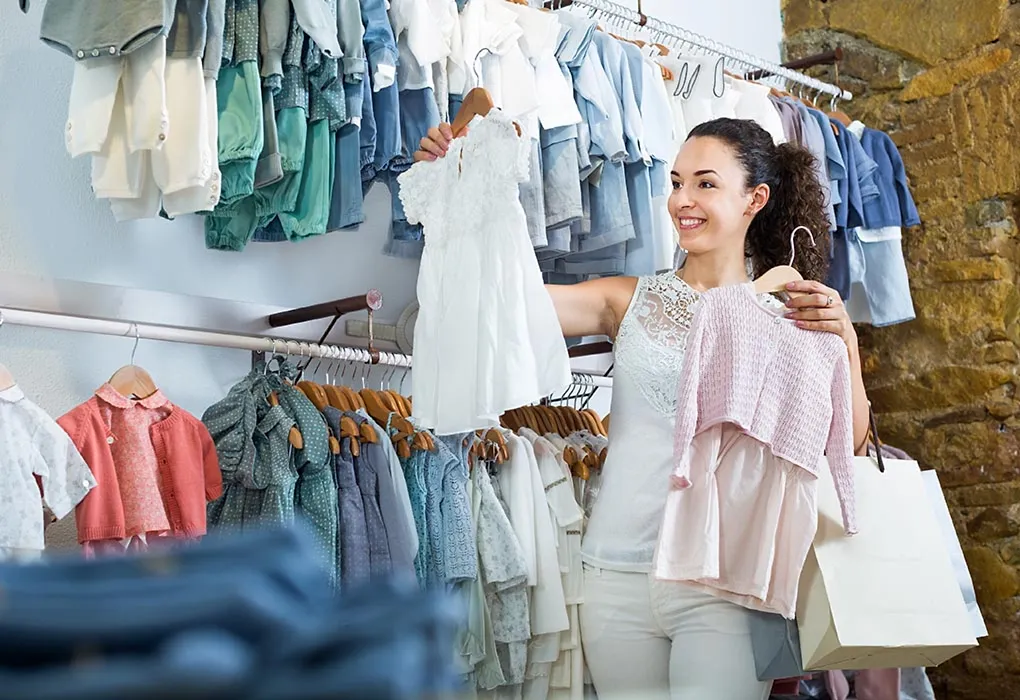
- Do your best to avoid clothes made from synthetic materials. Go for ones made from cotton or other natural fibres. These are much easier on your child’s sensitive skin.
- Most clothes you purchase for your baby can be cheap and useful. When buying any clothes you might want your baby to wear when going to an event or for a photo shoot, make sure you take about 2-3 of those. There is a good chance the little one would make a mess of either of those, so having a backup is in your best interests.
- The initial months of your toddler are precisely when the umbilical stump is still in the process of healing and becoming a proper navel. Therefore, avoid getting any separate pants in a small size, which would put the waist right on the umbilical cord, irritating it.
- Making a baby wear a T-shirt is difficult. Not only do infants have no idea how to navigate their body parts to wear the clothes correctly, but most babies hate having their heads and faces covered by anything. Therefore, go for shirts or suits that have a front-open button or buy a T-shirt that has enough space for the head to pass through easily.
- If your friends or relatives give you any of the old clothes worn by their kids, accept them wholeheartedly. These clothes have boded well for their children, and they will do so for yours, too.
- While picking out clothes to gift a relative or a friend who has just had a baby, pick out a size larger than the child’s current age. Larger ones are more comfortable, and even if they don’t fit the baby right now, they definitely will in a few months.
- In terms of baby clothing, single-body suits are the best style you can opt for your little one. These can be worn easily, and since they are buttoned up right below the crotch, your child won’t be able to pull them up or disturb the diaper in any way. Avoid using cloth-based nappies with such clothes, though.
- Buttons on a baby’s clothes can be difficult to close when the baby is crying, and it is the middle of the night. Zippers are a tad more convenient, but they might get worn out quickly or get stuck randomly. Opt for clothes that have studs that can be pressed easily.
- If you buy clothes larger than what your baby needs, don’t immediately wash them or remove their tags. Some clothes can be stored until the time is right, and others can be exchanged from the store if their need is imminent.
- Don’t go out and buy a suitcase full of clothes for your baby. Purchase a couple of necessary items and follow up once you know your baby’s size and gender. Your friends and family will undoubtedly gift you a few clothes, too.
- If you are planning to expand your family later on, it is best to purchase gender-neutral clothes. This will allow you to store them once your baby grows up and reuse them in case you plan to have a second child later on.
- When buying clothes for infants, opt for quality over quantity since their skin needs a good texture. For grown-up toddlers, purchase durable clothing that can be washed easily or replaced cheaply.
FAQs
1. How often do I need to buy new sizes?
Babies grow quickly, especially in the first year. For infants, you may need to buy new sizes every 2-3 months. Toddlers grow more slowly, so size changes might occur every 4-6 months.
2. How do I know if clothes fit properly?
Clothes should fit snugly but not tightly. There should be enough room for movement and growth, but not so loose that they pose a safety hazard. Check that there is no pinching around the waist, arms, or legs and that your baby can move freely.
3. What if my child falls between sizes?
If your child falls between sizes, it’s often best to go with the larger size to allow for growth. Another option is to choose adjustable or stretchy clothing. These types of clothing provide a bit more flexibility in fit, giving you more options to ensure the perfect fit for your child.
4. How can I ensure the best fit for my child when shopping online?
Read customer reviews for insights into how the clothing fits relative to the size chart provided by the brand. Additionally, check the return policy to ensure you can easily exchange items if they don’t fit as expected.
A newborn clothes size guide can be one of the most important tools you’ll need to help with your purchases for the little guy. Knowing the rapid growth rate of babies and planning ahead accordingly can help you make better shopping decisions.
Also Read:
Ideas to Organise Baby’s Clothes
Essential Baby Sleep Products – Checklist
How Many Newborn Clothes Do I Need?
How to Choose and Buy Clothes for Your Baby?
Newborn Baby Shopping – List of Items You Need to Buy
Was This Article Helpful?
Parenting is a huge responsibility, for you as a caregiver, but also for us as a parenting content platform. We understand that and take our responsibility of creating credible content seriously. FirstCry Parenting articles are written and published only after extensive research using factually sound references to deliver quality content that is accurate, validated by experts, and completely reliable. To understand how we go about creating content that is credible, read our editorial policy here.






